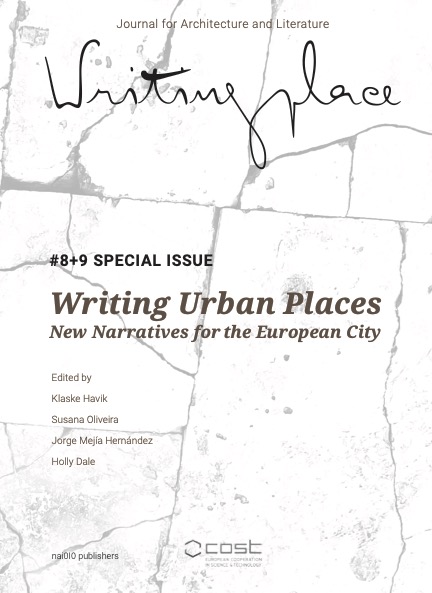Placing Urban Writings. Narrative Technology and Possible Futures for the European City
Working Group 1
DOI:
https://doi.org/10.7480/writingplace.8-9.7249Abstract
The essay departs from the question: How can stories be used for the development of cities?
In response, a theoretical framework is delineated that recognizes the built environment as a model that is both telic (a vision of a possible future) and technical (the means required to attain that future). By adopting this framework, the essay approaches the city at the scale of everyday, ordinary planning, rather than at the scale of ‘cosmic crisis’.
In line with that approach, the essay shows how stories can be useful to develop cities given their ability to encourage and foster sympatry, understood as the quality of environments where different (even adversarial) species coexist. Different individuals simultaneously use and offer different resources to the environment they share, and some of these resources fall within the category of ‘understanding’. This final category is captured in a series of micro-narratives about the city, which are then evaluated in relation to three distinct technologies that can be seen as common to buildings and stories, namely: sense, sequence and proportion.
References
Stanford Anderson, ‘L’Ambiente Come Artefatto: Considerazione Metodologiche’, Casabella 359-360 (1971).
Stanford Anderson, ‘People in the Physical Environment: The Urban Ecology of Streets’, in: Stanford Anderson (ed.), On Streets (Cambridge, MA and London: MIT Press, 1986).
Aldous Huxley, ‘Knowledge and Understanding’, in: Aldous Huxley, Tomorrow and Tomorrow and Tomorrow (New York: Harper & Bros., 1952), 33-68.
Marx W. Wartofsky, ‘Telos and Technique: Models as Modes of Action’, in: Stanford Anderson (ed.), Planning for Diversity and Choice: Possible Futures and Their Relation to the Man Controlled Environment (Cambridge, MA: MIT Press, 1968).
Downloads
Published
Issue
Section
License
Copyright (c) 2023 Jorge Mejía Hernández, Onorina Botezat

This work is licensed under a Creative Commons Attribution 4.0 International License.


